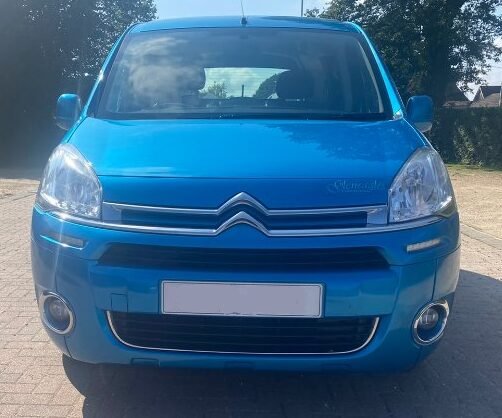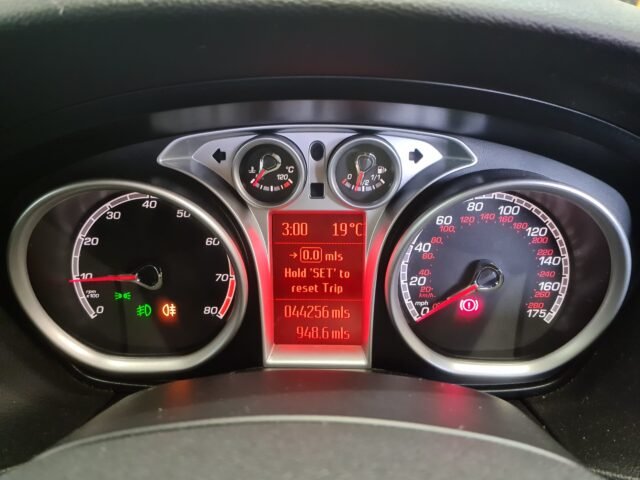
Have you ever driven in fog and realised just how ineffective headlights can be through the mist? Whether it's thick fog or a light sea mist, the effectiveness of your headlights is greatly reduced. It can also become hard, to virtually impossible to see when using your full beams too. Driving in fog can be a challenging experience in the day time, let alone at night when your headlights are reflecting back causing considerable vision impairment.
To help improve vision in these challenging circumstances many cars are fitted with front fog lights and all cars will be fitted with at least one rear fog light. They are fitted in such a position that they shine the light under the fog helping to illuminate the road ahead without glaring back at your face. The rear fog light is present to provide a much brighter red light on the rear to help your vehicle get seen sooner.
However, using the fog lights inappropriately can hinder other road users, often to the point of causing them considerable difficulties driving, e.g. visual impairment. This is why the cars are fitted with a small indicator inside known as a tell-tale light. The rear fog and tell-tale light is also included on the MOT inspection.
Traditional car headlights are normally at the mid height position of the car, during normal driving this is the optimal position for throwing the light ahead and still illuminating the road. When there is fog, mist or smoke present in the air the headlights hit the fog and back into your face drastically reducing visual range. Many cars, certainly all modern cars are now fitted with front facing fog lights to combat this problem.
Front fog lights are normally positioned in the lower part of the car, are angled down and have a different light pattern. This is designed to shine the light under the fog and directly onto the road surface. By taking this approach the light can travel under the fog and illuminate the road without bouncing off the fog and dazzling the driver. Some cars will also turn off the headlights when the front fogs are enabled to further reduce glare and improve visibility for the driver in fog conditions.
All cars will also have a rear fog light. Whilst the rear fog light doesn't help with seeing ahead, it does provide a much needed boost in making you visible to other road users. By having a single, or double rear fog light turned on during foggy conditions it means you are visible to approaching cars from a much greater distance.

Your car will be fitted with a symbol known as a 'tell tale' which illuminates when that fog light is being used. These symbols are designed to illuminate for front and rear fog lights independently. Their sole purpose is to inform the driver when their fog lights are on and off.
On some vehicles, the fog light tell-tale can be a single symbol that changes colour depending on whether the front and rear fogs are on. On other vehicles you may have a separate tell tale symbol for the front and the rear.
It is important to understand these symbols and know what they mean. Driving your vehicle with fog lights on when they aren't required can have major consequences for other road users.
There are many symbols which can appear on your dash, we've covered some of them before, click here to read more.

This can vary dramatically on each car and you should refer to your owners manual. Whilst there is no standard method for turning on the fog lights, you will find they are virtually always attached to the stalk or lighting dial for your normal headlights. The fog light symbol should be clearly marked on the controls and be easy to find, alternatively it will be displayed within your owners manual.
It is essential that you know and understand the operation of your lights and what each symbol involves before setting out on a journey.
Fog lights should only be used when your vision has been considerably reduced due to the presence of fog or mist. It is important that as soon as conditions improve that the fog lights are turned off to avoid dazzling other road users and potentially causing a crash,
Your rear fog light is used to alert other road users to your presence, by turning on your rear fog you car will be visible from a further distance to any approaching cars. It is important to remember to turn off your rear fog light as soon as conditions approve as this will dazzle other drivers and can be seen as brake lights.
One of the biggest mistakes drivers make is not turning off the rear fog once a car is behind them. As soon as a vehicle is behind you then turn off your rear fog as it will glare through the fog and seriously obscure their vision.
This is an age old debate with pros and cons for either colour. Virtually all cars with front fitted fogs will have a white bulb fitted as this fits with the aesthetics of matching the other lights on the front of the car.
There is a large group of people who believe yellow lenses or bulbs are the way forward for front fog lights. Yellow light supposedly is less likely to reflect off the fog and more likely to cut through and illuminate the road ahead. When driving in snow and ice, yellow light doesn't glare as much off the snow/ice and thus stops your eyes getting as tired on long journeys.
For most, sticking to the normal warm or ice white (led/hid) as per the factory fitment is the best solution. It is normally only the extremes where a yellow light is considered beneficial.
If you read the 'Road Vehicles Lighting Regulations 1989' you will find that it specifically states using lights that dazzle other road users is considered unlawful. Therefor using your fog lights in conditions where fog lights are not required would leave you open for prosecution. Generally speaking the incorrect use of lights is often dealt with by a stern word from the police and/or a fine.
There is also a lot of guidance in the highway code for using fog lights, specifically rules 234 to 236. According to the highway code, You MUST NOT use front or rear fog lights unless visibility is seriously reduced as they dazzle other road users and can obscure your brake lights. You MUST switch them off when visibility improves.
If your fog lights are not working, either rear or front then you need to get them looked at as soon as possible. The most common cause is the bulb being blown and can quite often be a quick home fix. If this isn't the case then there are a number of other possible solutions including fuses, wiring and the switch.
If your rear fog light isn't working or your tell tale symbol isn't working then not only does this become dangerous in case you are caught in the fog but it will also be classed as an MOT fail.
As a driver it is your responsibility to ensure all your lights are working and operational before setting out in your vehicle on each journey. If for any reason you are unsure or unable to fix a problem please pop by our garage or contact us to get your car booked in.
There is some good guidance in the highway code on how to use your lights and drive correctly in fog, the general consensus is to practise the following during foggy conditions.
Being safe on the road is your number 1 priority as a driver. As part of this comes the need to know how to correctly use your fog lights during adverse driving conditions. Leaving your fog lights on when the weather conditions are normal can have a considerable impact on other drivers, and in the worst cases cause injury or even death due to road traffic accidents.
All cars are fitted with rear fog lights and the majority will also have front fog lights. These can be used to help with both your visibility and being seen by other drivers. As a driver we need to remember to be vigilant to what lights we have on and use the tell tale symbols to do so.
As a driver, it is your responsibility to ensure your lights and your vehicle is operating correctly and remains road safe. If at any point you would like this checked or have any concerns please contact the garage or pop in for a chat as we are always happy to help.